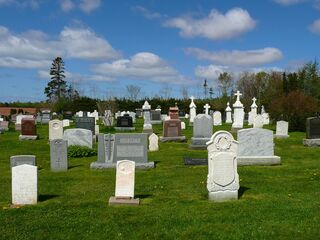Spirituality
Americans’ Do-It-Yourself Death-Care Rituals
Why have cremations more than doubled?
Posted November 9, 2021 Reviewed by Abigail Fagan
This post is a review of American Afterlives: Reinventing Death in the 21st Century. By Shannon Lee Dawdy. Princeton University Press. 246 pp. $27.95.
Throughout the 20th century, most Americans were dispatched to funeral homes when they died, embalmed, and buried in cemeteries. With increasing life expectancies, Shannon Lee Dawdy suggests, “death became a stranger.” Americans were taught to suppress their grief and move on once the body was in the ground.

These days, although the embalming rate in the United States remains greater than that of any other country, the hospice movement allows the dying and the soon-to-be bereaved to plan their own memorials; the number of cremations has more than doubled; and do-it-yourself home funerals and green burials are increasing.
In American Afterlives, Dawdy, a professor of anthropology at the University of Chicago, filmmaker, and author of Patina: A Profane Archeology and Building the Devil’s Empire: French Colonial New Orleans, draws on interviews with funeral directors and new death ritual entrepreneurs in a fascinating account of these changing practices.
Dawdy acknowledges that Americans have not reached a consensus about rituals they consider inappropriate, sacrilegious, or repulsive. Nonetheless, she maintains, Americans, who have never really been in denial about death, are more hungry than ever for ritual meaning and creative in finding it. Rather than “perceiving the corpse as dead matter,” they perceive the body “as a resource for spiritual and ecological regeneration.”
American Afterlives describes an extraordinary array of approaches to celebrate — and remember — the dead. A former executive for the Disney Corporation, who now works for a company that owns 36 funeral homes and six cemeteries in 13 states, tells Dawdy about a Multisensory Experience Room, with high-definition projectors, screens, surround sound, and a scent generator, which can take mourners to “the beach, the golf course, the mountains, or a Zen Garden. We can recreate the kitchen where the person maybe baked cookies.”
Glass orbs, diamonds, dinnerware, and portrait paintings, Dawdy indicates, are now made from the powdered bone of the deceased. A gumball machine with plastic spheres filled with ash allows family and friends (willing to part with a quarter) to take home a little bit of Uncle Joe. A Loved One Launcher blasts cremated remains and confetti into the sky, providing onlookers “feelings of celebrations, happiness and companionship,” a sendoff gonzo journalist Hunter S. Thompson devoutly desired.
Predicated on the conviction that dust-like particles can be “divided, shared, transformed, redistributed, and maybe even recycled” and still contain a person’s essence, these “keepsakes” are meant to open a permanent portal between the living and the dead: “Some people talk to them, even bring them along to family events.” The portrait painter insists that his work “is not just a representation of them, it is them.”
Green burial sites like Hollywood Forever Cemetery in Los Angeles, Dawdy reveals, re-naturalize death. Bodies are bathed, placed in biodegradable coffins or natural fiber shrouds; graves are dug by hand (to eliminate the carbon footprint of backhoes); and no plantings are permitted. Deceased individuals are honored by returning them to whence they came, to become another living thing, a California oak or microbes enriching the soil beneath them. And plots are not “owned” by families.
Scattering ashes on water, an option preferred by Buddhists and Hindus, which leaves no visible marker, Dawdy points out, is increasingly popular among Americans who do not “want to become something after death.” Approaching bodies as renewal resources, a start-up in Seattle, Washington, we learn, has a patent pending for a process to convert human beings into compost, “much like the topsoil you’d buy at a local nursery.”
The face of death in the United States, Dawdy concludes, is shifting. Families now have alternatives to funeral specialists. In fact, “the more improvised and individualized the ritual, the more efficacious it may be for the bereaved. DIY enchantment is booming.” And, as American Afterlives demonstrates, this approach, at once materialistic and spiritual, increasingly co-exists with or yields to “a green burial ethos about returning to the planet.”




